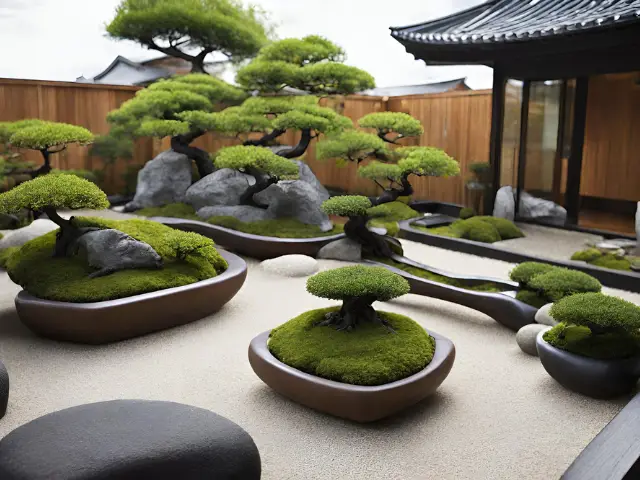Designing a Zen Garden with Containers and Bonsai Trees
Zen gardens have long been admired for their simplicity, tranquility, and ability to evoke a sense of peace and serenity. These beautiful spaces are often found in traditional Japanese gardens and are designed to create a harmonious connection between nature and human beings. While designing a regular Zen garden may require a significant amount of space and resources, creating a miniature version using containers and bonsai trees can be just as rewarding.
Containers play an essential role in designing a Zen garden with limited space. They offer flexibility, allowing you to create a serene sanctuary even on a small balcony or patio. Any container can be used, but it is recommended to choose those made from natural materials like ceramic or stone to maintain the authentic feel. Consider the size of the container based on the available space and the types of plants you wish to incorporate.
Bonsai trees are an integral part of Japanese culture and are symbolic of harmony, balance, and patience. These miniature trees bring an air of elegance and timelessness to any garden setting. Choose bonsai species like Juniper, Pine, or Maple for an authentic Japanese touch. Take into consideration the tree’s natural habitat when deciding where to place it in your container garden; some require full sun exposure while others prefer partial shade.
When arranging your Zen garden, keep in mind the principles of simplicity, balance, and naturalness. Start by placing larger stones strategically in your container to represent mountains or islands amidst an ocean. The stones should seem as if they naturally emerged from the landscape rather than being forcefully arranged.
Next, add sand or gravel around the stones to create patterns symbolizing water ripples or waves. Using sand perfectly embodies the simplicity that is central to Zen philosophy as it allows for easy rearrangement when desired. Rake the sand gently in smooth patterns or irregular lines resembling ripples formed by water currents.
Once you have set up the foundation of your garden, it is time to plant your bonsai trees. Arrange them in a visually pleasing manner, considering their colors, shapes, and sizes. Be mindful not to overcrowd the container; leave enough space for each tree to stand out and breathe. Surround the base of each tree with small pebbles or moss to create a naturalistic effect.
To complete your Zen garden, add elements like miniature lanterns or Buddhist statues. These objects can be strategically placed to further enhance the sense of tranquility and spiritual connection. However, remember that simplicity is key – choose just a few meaningful pieces rather than cluttering the space with excessive ornaments.
When designing a Zen garden with containers and bonsai trees, it is essential to take time for reflection and contemplation. Sit beside your creation and allow yourself to become immersed in its peaceful ambiance. The beauty of these gardens lies in their ability to inspire personal contemplation and provide an escape from the worries of daily life.
In conclusion, designing a Zen garden with containers and bonsai trees is an excellent way to create a peaceful retreat in limited space. By incorporating elements such as carefully selected containers, aesthetically pleasing bonsai trees, strategically placed stones, sand patterns resembling water currents, and thoughtful ornaments, you can create a serene sanctuary that exudes tranquility and promotes inner peace. So why not embark on this harmonious journey today?














